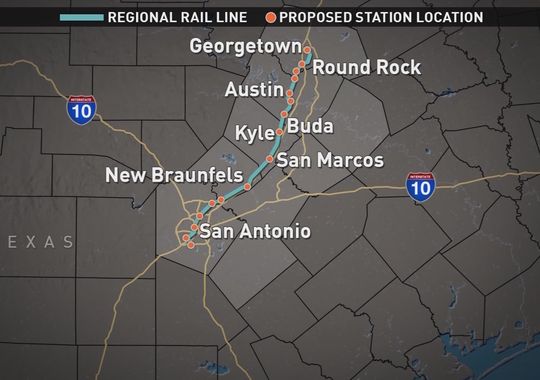SAN ANTONIO – A project to bring commuter rail line service connecting San Antonio and Austin gained speed Tuesday night.
The Lone Star Rail Line held it first public meeting in San Antonio to grow momentum for a project that could cut traffic on Interstate 35.
The idea is instead of having to drive to Austin, commuters would be able to hop onto a train.
The UTSA Downtown Campus is a proposed Lone Star Rail station site. Students like the idea of being able to get on a train after class and be in Austin in a little more than an hour.
Those that turned out to learn more about a transportation project seemed to embrace the proposals, like Beckah McNeel who said she could use that time to be productive.
"I would love to be able to sit and read instead of fight traffic," she said.
Lone Star's proposal includes 32 commuter trains a day, every day of the week from San Antonio to Georgetown, just north of Austin.
The trains would make stops at every major town and city along the route.
Riders would also have the option of a 75-minute express service from downtown San Antonio to downtown Austin, with stops only in New Braunfels and San Marcos.
Tex Morgan took strong interest in the presentation as a VIA Board Member.
"As we grow we need to offer people other ways to get around," he said.
As more people move to South and Central Texas, the fallout spills on to I-35 from massive traffic jams to car crashes. Lone Star said its service takes people off the roads and on to trains.
Downtown homeowners liked Lone Star's pitch to move freight trains traffic out of their backyards. To make space for the commuter rail, freight traffic would be shifted to less populated areas, further from downtown.
The Rail District says the project could serve around 300,000 students and faculty due to the amount of universities along the proposed route.
The project will cost around $1.7 billion but funding still has to be sorted out and could come from several sources, including federal, state, local and private funds. If approved, construction could begin within five years.


